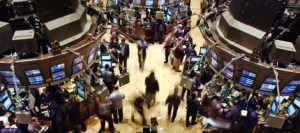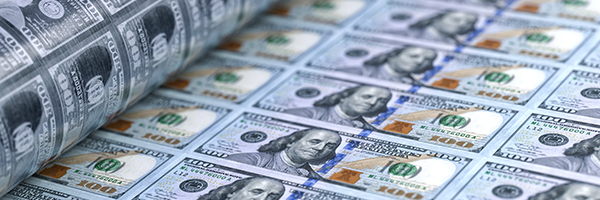
May 23, 2023 | Daily JAM, Mid Term |
Today, May 23, finally saw some fear in stock prices. The Standard & Poor’s 500 closed down 1.03% on the day. The Dow Jones Industrial Average ended down 0.59%. The NASDAQ Composite was down 1.17% and the NASDAQ 100 dropped 1.21%. The small-cap Russell 2000 was off just 0.21%. That’s a remarkably small drop considering the S&P 500 was up 9.97% for 2023 as of the close yesterday. And the NASDAQ Composite was ahead 22.01% for the year as of the May 22 close. Looking at this market, what cries out for explanation isn’t why stocks slide today but why they have remained so strong in the signs of a slowing economy and a continued debt ceiling crisis that could, potentially, result in a default by the United States.

August 29, 2022 | Daily JAM, Morning Briefing |
Financial markets are fixated on the risk from the Federal Reserve’s interest rate increases. But that means the markets are overlooking the risk posed by the Fed’s efforts to reduce the size of its balance sheet.

May 4, 2022 | Daily JAM, Morning Briefing |
Today the Federal Reserve’s Open Market Committee announced that the central bank would raise its benchmark interest rate by 50 basis points. Stocks rallied strongly after Federal Reserve chair seemed to take off the table the 75 basis point increase in June and July that financial markets were convinced was in the cards.

February 2, 2022 | Daily JAM, Short Term |
I’m a big fan of history. I study it. I love reading it. I find the patterns of the past fascinating. Both in themselves and for what they tell us about our own time and the likely future. But…I just don’t think stock market history is a very reliable guide to the present and the near-term future right now.

January 13, 2022 | Daily JAM, Videos |
I’m starting up my videos on JubakAM.com again–this time using YouTube as a platform. My eighty-seventh YouTube video “3 Sectors to Avoid After the Fed Tightens” went up today.

August 10, 2021 | Daily JAM, Long Term |
Back in 2018 the Federal Reserve started to run down its valance sheet out of concern that its asset pile had grown so large that the central bank was in danger of becoming the market for things like Treasuries and mortgage-backed assets. (For some of the dangers in that state see the Bank of Japan, which does “own” the market for government debt.) Over the next two years the Fed ran its assets down to $3.75 trillion from $4.4 trillion. If you haven’t been paying attention, you might have missed the steady increase in the Fed’s holdings to a whopping $8.2 trillion in Treasury bonds and mortgage-backed assets.

December 16, 2020 | Daily JAM, Mid Term |
Today’s (Wednesday, December 16) meeting of the Federal Reserve, the last of the year for the central bank, ended with the promise to maintain the current massive monthly bond purchases of at least $120 billion until the Fed sees “substantial further progress” in employment and inflation. This replaces the earlier promise to keep buying “over coming months.” In other words the Fed’s bond buying policy now fits into the Fed’s interest rate framework of extraordinarily low for an extraordinary long time.

February 22, 2019 | Daily JAM, Morning Briefing, Short Term |
What does the Federal Reserve want to tell the financial markets? Maybe you believe it's just one of those things. You know, one of those coincidences. But I don't. Seven, count 'em seven, Fed officials are scheduled to speak today, Friday, February 22. That's just...
February 20, 2019 | Daily JAM, Mid Term |
As surprises go today's release of the Federal Reserve's minutes from its January meeting doesn't rank up there with Agatha Christie. (Remember 10 Little Indians? Where the murderer turns out to be someone who had earlier faked his own murder?) But still as Fed...

February 20, 2019 | Daily JAM, Morning Briefing, Volatility |
All Today's release of the minutes from the Federal Open Market Committee’s January meeting has the potential to move markets--maybe even more potential than usual. That's because the market is looking for guidance on a series of Fed-centric issues. First, there's the...

January 30, 2019 | Daily JAM, Morning Briefing |
At 2 p.m. New York time this afternoon the Federal Reserve will release a statement on the results of the meeting of its interest-rate setting Open Markets Committee. Shortly after that Fed chair Jerome Powell will hold a press conference to explain the Fed's actions...

January 9, 2019 | Daily JAM, Mid Term |
So what, exactly, didn't the markets like about the minutes of the Federal Reserve’s December meeting? After an initial spike to the day's high at 2595 at 2:09 p.m. New York time, nine minutes after the 2:00 p.m. release of the minutes, the Standard & Poor's 500...








